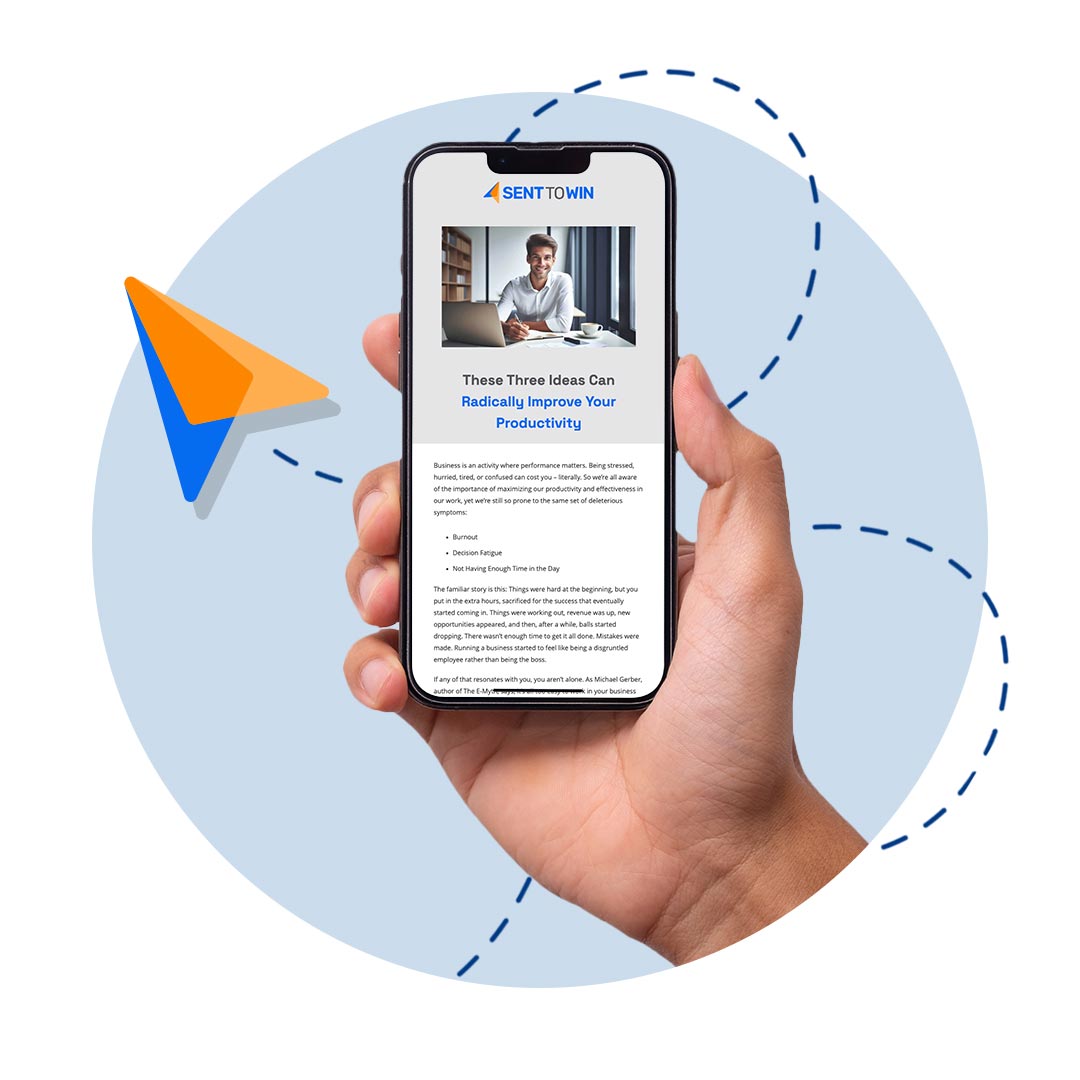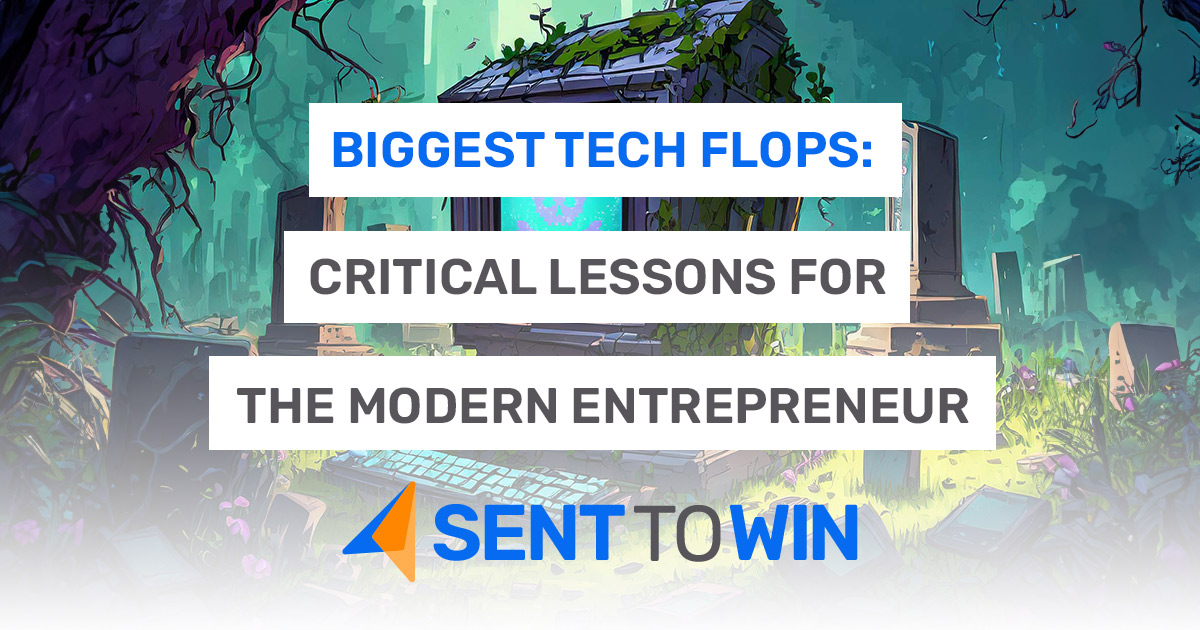Biggest Tech Flops: Critical Lessons for the Modern Entrepreneur
In today’s newsletter:
- Biggest Tech Flops: Critical Lessons for the Modern Entrepreneur
- Taxes Are Getting Complicated, Student Loans, and Non-Profit Trends
- Best Christian Podcasts
It seems like everyone knows the future.
At least, that’s the impression you get from most technology, business, and political commentators. And it’s easy to see why – Everyone loves a futurist. We want the security of being able to plan around sure bets. We like the intrigue of promising trends.
But not every technological innovation catches on as foretold.
Remember when Google Glass was going to be the future? Back in 2013, there was a lot of buzz around the “ubiquitous computer” that would provide a heads-up display in front of users’ eyes all day, at all times. It was going to revolutionize the world. It was going to change everything.
It didn’t.
Turns out, people don’t want to stare at a computer screen 100% of the time, and the obvious privacy concerns were enough to start Google Glass bans in many common locations before they even got momentum.
Meta, unfortunately, seems not to have learned the lesson that consumers typically don’t enjoy having computers strapped to their faces. VR headset sales are down 40% from 2022 (building on a decline from 2021-2022), and despite many billions of dollars poured into development and marketing, it looks like the Metaverse, at least for the moment, just isn’t going to happen like they said.
Today, we’re going to look at a fabulous technological revolution that never happened, plus one tech company’s failed assault on an established market space, in order to pick up on some lessons learned. Hopefully, we can avoid the same mistakes in our own endeavors – and keep an eye out as investors.
The Segway
“But… that can’t be it.”
These are the words of Good Morning America host Dianne Sawyer on December 3, 2001, when the Segway was unveiled. She was talking specifically about how you use the machine, but from the look on her face, and her cohost’s equally nonplussed reaction, she may as well have been talking about the product itself.
If you don’t remember, back in 2000, news leaked that famed inventor Dean Kamen was working on something big. Something revolutionary. Something that would “change the world.” Steve Jobs said it would be as significant as the personal computer. A huge book deal was signed with the inventor – before anyone knew what the product even was. Kamen and his team did a remarkable job keeping their mouths shut, until finally, on Good Morning America, he revealed his well-kept secret to the world.
It was a scooter.
An impressive, technologically sophisticated scooter with gyroscopes and brilliant computer chips that made it self-stabilizing. But this thing had been sold as an earth-shattering development. From talking to the inventor and hearing his vision, you get the impression that he really thought people wouldn’t walk anymore. They’d just ride Segways.
Needless to say, that didn’t happen, Kamen sold the company after just 3 years, and twenty years later, the Segway remains something of a joke, nothing more than a curiosity for tourists booking Segway tours.
Segway’s Big Lesson: The Hype Can’t Overshadow the Product
In the age of social media, Donald Trump, and the smartphone, it’s easy to get the impression that you can never take the hype too far. Every product is the best thing since sliced bread, every service is world-famous, and the louder you can be, the better. Unfortunately for the cynical self-promoters, you do still run into something called misaligned expectations when a product is oversold.
Look at it this way – if you tell your customers that they’re getting a $50 rebate, they’ll probably like that, and it may move product for you and perhaps even create some loyalty going forward if you do as promised. If you tell them they’re getting a $100 rebate, however, and you only end up giving them $50, they are going to be furious. They got $50 for free, and they will hate your company because you oversold them on your promotion.
The problem with Dean Kamen’s Segway launch is that he had credibility. We believed him when he said he had an invention that would change the world. He was capable of such an innovation. But his excitement carried him away, and in that year of speculation, people’s imaginations ran wild. The product didn’t have the ability to live up to the hype that it created, and so the Segway rolled into the dustbin of history.
Getting excited about your product or service is fine and good. You should be excited about your product or service. But don’t call it a revolution… unless it is one. Most of the time, it’s not going to change the world, so aim for the right marketing message that will resonate even after the customer gets the product in their hands.
Google+
Google didn’t invent social media, but it didn’t have to. When Google+ unique brand of social media launched in 2011, it was hyped as “The Facebook-killer.”
And why shouldn’t it have been? Google was the 800lb gorilla, the big tech company overshadowing all others. With Google’s built-in advertising and distribution (from so many web users starting on their homepage), their massive war chest, and technical genius, it’s no wonder that millions of users signed up instantly. After only a year, 90 million people had Google+ accounts.
And then… Well, it just never really took off. It was eventually announced that Google+ would come to an end in 2019, but it was taken down even before its termination date. And no one really noticed.
Google+’s Big Lesson: Don’t Take on an Opponent You Can’t Handle
When Google announced its plans for a social media network to rival Facebook, it was a shot fired, a declaration of war. And despite a lot of great expectations, Google just didn’t seem all that invested in winning the fight.
Facebook was in a strong position, with over 500 million active daily users at the time, and the team at Facebook was working hard to ensure greater and greater attractions to increase engagement on the site, including adding new features and calibrated re-designs always meant to enhance user experience.
Google+ had a change in leadership a couple of years after launch, and instead of gaining features, it kept losing features. Initially, Google+ was integrated with YouTube, Google Photos, Hangouts, etc. But it began removing this functionality early on, and the product just wasn’t strong enough without it. The user interface was difficult to figure out, and people found it hard to spend more than 5 seconds on the social network. It wasn’t clear what you were supposed to do there.
This all coming from a company whose then-CEO said, when asked why Google hadn’t gotten involved in social media before Google+: “I was busy.”
And that was the sense we got from Google, even after they got into social media: They’re busy. They have other things to do. They have a search engine, AI research, and a lot of very important things. From time to time, it seems, they’d remember that they had a social media network, but then they would quickly forget and move on to more important things. It’s no wonder they lost.
As business leaders, we don’t need to be all things to all people. But if we decide to expand into contentious territory, we have to accept that it’s going to be an uphill battle and plan (and execute) accordingly. No large, established company is going to just let you waltz in and steal their market share. Taking on an industry leader requires a lot of grit, nimbleness, and attention. If you can’t stand the heat, don’t go into the kitchen in the first place.
TL;DR
Hype is a powerful thing. Great expectations are wonderful in business, and if you can get people talking before you release your product, so much the better. But beware of over-selling your product and creating misalignment between consumer expectations and what is actually delivered. And if you’re going to take on a serious competitor, you can’t put the project on the back burner. It’s going to take all that you’ve got.

Jaime’s revolutionary “Chair-Pants” earned him a lot of confused stares, but he took consolation in knowing that he was the future.
INDUSTRY INSIGHTS
Taxes Are Getting Complicated, Student Loans, and Non-Profit Trends
Taxes Are Getting Complicated
Pillar Two Tax reform, an international agreement signed by 138 countries representing 90% of all economic activity, goes into effect this year. Aimed at removing individual nations’ incentives to race to the bottom in order to attract corporations, Pillar Two institutes a 15% global minimum tax on all revenue earned in each participating country for multi-national companies earning more than $750 million in revenue. Despite sounding straightforward, experts assure us it is quite complex. Critics of the move say that Congress has given up its ability to set many of its own taxation policies and will lose tax revenue. Most worrisome, the enforcement mechanism in the agreement may allow foreign countries to tax companies on U.S. income. Currently, the US corporate tax rate stands above the minimum at around 21%.
Student Loans
The Biden administration announced nearly $5 billion in student loan forgiveness this past week, based largely on what jobs the borrowers perform. 74,000 teachers, nurses, firefighters, and other public workers will have their debts crossed out and passed to the general public. This, and other recent loan forgiveness plans, have critics crying “foul,” saying these sweeping debt cancellations are government kickbacks for its own workers at taxpayer expense during a time of ongoing inflationary difficulty. As of December, total student loan debt in the United States stood at around $1.74 trillion held by 43.5 million Americans.
Non-Profit Trends
2023 was a challenging year for non-profits, due to staffing shortages, uncertain future revenue models, employee burnout, and a lackluster Giving Tuesday that fell short of expectations, seeing just a 0.6% increase in donations in a year of at least 3.4% inflation, along with a 10% reduction in the number of donors participating. Forbes predicts, to counteract these difficulties, non-profits will increasingly have to rely on the digital space for fundraising efforts, ramp up the use of AI, collaborate between other non-profits, and rely on community involvement and influencers. Nevertheless, non-profit leaders seem to be more optimistic about 2024 than for-profit executives and owners.
Sunday School
Q. What are the names of Noah’s three sons?
A. Shem, Ham, and Japheth
TIPS & TRICKS
Best Christian Podcasts
Whether you need something edifying to listen to on your daily commute, are searching for a resource to help you get a daily dose of scripture, or are interested in leadership advice from a Christian perspective, there is a podcast for you. Today, we want to highlight 4 of the best Christian podcasts that might be just what you’ve been looking for.
Pray the Word – With David Platt
Renowned author, pastor, and speaker David Platt wants to pray through the scriptures with you in a daily, short-form podcast (4-7 minutes) that are perfect for starting your morning drive. David reads a scripture, offers a meditation based on the reading, invites you to pray with him, and then sends you off with a clear intention for the day. Perfect for the busy executive, entrepreneur, or high-powered worker trying to find ways to get more scripture into his or her day.
Craig Groeschel Leadership Podcast
Craig Groeschel, the pastor of the largest church in America, hosts a show featuring leaders from business, academia, ministry, and professional sports to bring you insight and practical advice on habits, goals, decision-making, communication, team culture, and productivity. With video or audio-only episodes from 20 minutes to an hour, this show is an excellent way to challenge yourself in the way you live your life day to day, interact with others, and maintain an effective mindset.
Entreleadership with Dave Ramsey
Join personal finance guru Dave Ramsey as he discusses how to successfully lead your organization, from a biblical perspective. As he says, “Whatever you lead can only grow when you do,” so you have to invest in personal development and growth. You can listen in as Dave advises listeners on their own particular situations, hear his thoughts on conditions you may be facing in your business, or stay coached on his formula for wise financial stewardship for businesses.
The Redemptive Edge with Andy Crouch
Andy Crouch, former executive editor of Christianity Today and author of Culture Making, hosts this 14-episode series wherein he interviews entrepreneurs about their respective journeys to success. Crouch emphasizes the unique experiences that each of us can use to tackle particular problems in the marketplace and world. He and his guests try to be transparent about their challenges, moments of insight, missteps, and triumphs. Hearing the origin stories of successful business leaders is always inspiring and helpful, and at only 20-30 minutes per episode, it won’t take you long to work through this series if it catches your eye.
Quick Hits
- Donald Trump wins the New Hampshire Republican Primary with 54.5% of the vote.
- Chinese and Hong Kong stocks continue crashing, having wiped $6 trillion off the board in the last 3 years.
- Sports Illustrated begins laying off its entire staff, and likely will not bounce back.
- Luke Larson of Relevant explains how doubt saved his faith.
- The SEC backs conservative Apple shareholders in their objections to the app store’s alleged ideological discrimination.
Guess the Prompt
Our “Biggest Tech Flops” graphic was generated using AI prompts. Guess the prompt for your chance to win Sent To Win gear. Just reply to this email with your best guess.
For Kingdom Leaders, By Kingdom Leaders
Bringing Kingdom-minded leaders like you fresh perspectives and insights on business, finance, and leadership trends.








